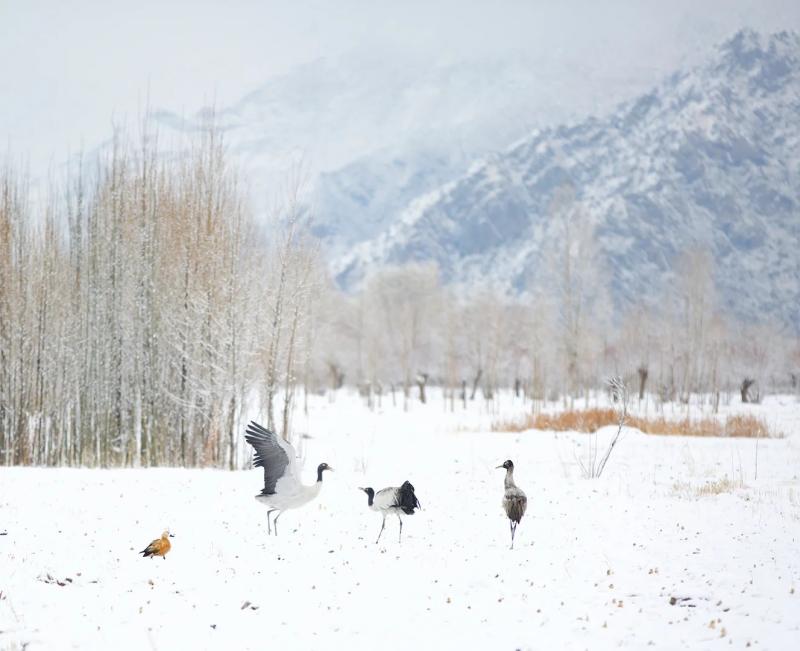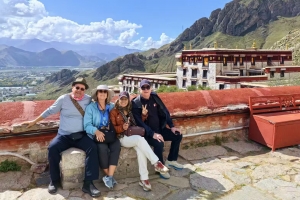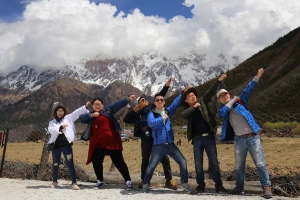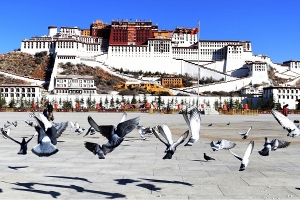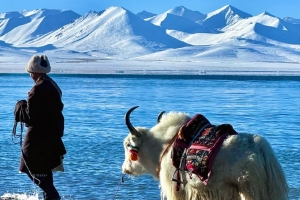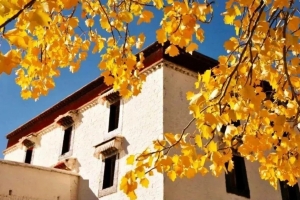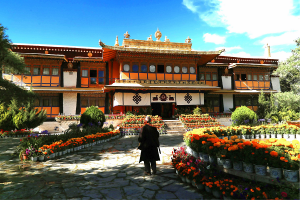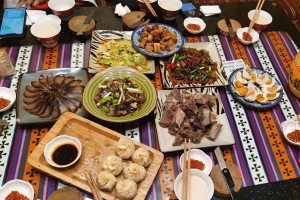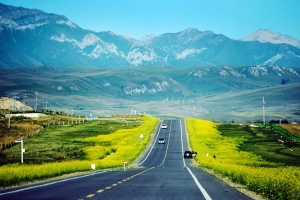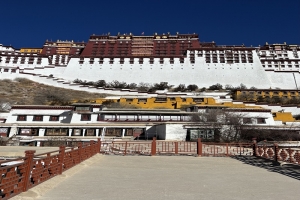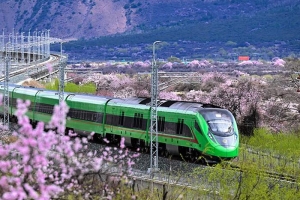When people think of Tibet in winter, they often imagine a snow-covered land with mountains sealed in ice. In reality, the plateau offers more than just pure white scenery—one hidden highlight is the combination of birdwatching and hot spring relaxation.
During this quiet season with few tourists, you can observe rare birds soaring over lakes and wetlands framed by snow and sunshine. Afterwards, soaking in natural hot springs warms the body and soul, creating a truly unique Tibetan winter experience.
Winter Birdwatching: The Symphony of Life in Highland Wetlands
Tibet in winter is a paradise for migratory birds. Lakes and wetlands become seasonal havens for rare species such as black-necked cranes, bar-headed geese, and ruddy shelducks. The crisp winter air offers excellent visibility, making it easier to capture clear, stunning photographs.
Recommended Birdwatching Spots:
1.Lalu Wetland (Lhasa)
Highlight: The largest urban wetland in China and a national nature reserve, hosting flocks of black-necked cranes and bar-headed geese in winter.
Suggested time: Half a day
Tip: Morning light is soft and ideal for bird photography.

2.Yamdrok Lake & Surrounding Wetlands (Langkazi)
Highlight: Against the sapphire-blue lake and snowcapped mountain reflections, black-necked cranes often soar in groups.
Suggested time: One day, can be combined with Karola Glacier or Langkazi town visits.
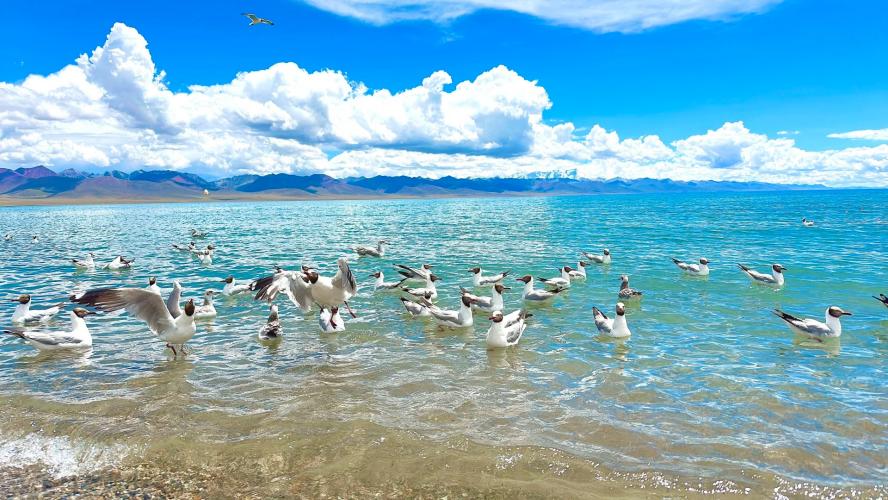
3.Serling Tso (Nagqu)
Highlight: The largest lake in Tibet. When not completely frozen, its wetlands attract wintering birds, perfect for capturing the wild essence of the plateau.
Suggested time: 1–2 days for immersive nature photography.
Birdwatching Tips:
- Use a telephoto lens to avoid disturbing the birds.
- Wear warm, neutral-colored clothing to blend into the environment.
- Protect your ears, hands, and feet from the cold—winter winds can be fierce.
Winter Hot Spring Therapy: Warmth on the Roof of the World
After a day of birdwatching, nothing is more relaxing than sinking into a hot spring and letting your body gradually warm up. Tibetan hot springs are natural geothermal pools rich in minerals, known for soothing dry highland skin and relieving muscle fatigue.
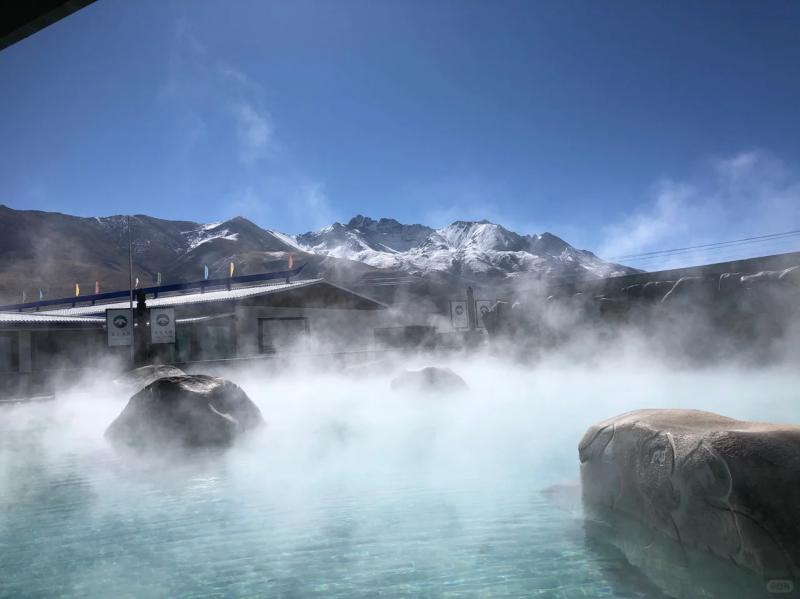
Recommended Hot Spring Destinations:
1.Yangbajain Hot Spring (Damxung)
Feature: At 4,200 meters above sea level, it’s one of the highest geothermal springs in the world. In winter, soak in warm water while gazing at distant snow mountains.
Tip: The outdoor pools are especially photogenic with winter mist, but towel off quickly to avoid catching a chill.
2.Dezhong Hot Spring (Lhasa)
Feature: Located near Lhasa, its sulfur-rich waters are believed to benefit joints and skin health.
Tip: Ideal for a day trip, easily paired with a Lhasa city tour.
3.Basum Tso Hot Spring (Nyingchi)
Feature: Nestled by a lakeshore forest, it offers views of snow mountains and steaming hot water—magical in winter.
Tip: Combine with a lakeside circuit for a romantic “snow bath” experience.
Suggested 2-Day Winter Itinerary: Birdwatching + Hot Spring
Day 1: Lhasa → Lalu Wetland → Yangbajain Hot Spring
Morning: Birdwatching at Lalu Wetland, photographing black-necked cranes and bar-headed geese.
Noon: Drive to Yangbajain and enjoy a hot spring soak in the afternoon.
Evening: Stay overnight in Yangbajain or return to Lhasa.
Day 2: Lhasa → Yamdrok Lake Wetlands → Karola Glacier
Early morning: Capture wintering birds at Yamdrok Lake with snowcapped mountains in the background.
Afternoon: Visit Karola Glacier before returning to Lhasa in the evening.
Recommended tourist routes
Tibet Classic 8-Day Tour: Lhasa + Shigatse + Yamdrok Lake + Everest Base Camp + Namtso [8-Day Small Group Tour for 10 People] $959
Travel Tips
Best Time: November to February, when migratory birds gather and hot spring experiences are at their peak.
Transportation: Birdwatching sites are often near lakes and wetlands—consider hiring a car or joining a tour.
Gear: Bring a telephoto camera, cold-weather clothing, and a thermos.
Health: Avoid strenuous activity upon arrival at high altitude. Limit hot spring sessions to prevent low blood pressure or fatigue.
Winter in Tibet offers more than just snow and tranquility; it also blends life and warmth. At dawn, watch black-necked cranes dance gracefully by the lake; at dusk, soak in the mineral-rich waters and feel the gentle embrace of the plateau. Birdwatching connects you to nature, while hot springs dispel the chill and offer deep solace.
Journey2Tibet curates winter itineraries that blend the beauty of birds with the healing warmth of nature. Let us take you on a journey of tranquil lakeside scenery, vibrant wildlife encounters, and invigorating hot spring treatments. Book your Journey2Tibet trip now for an unforgettable winter adventure in Tibet!

